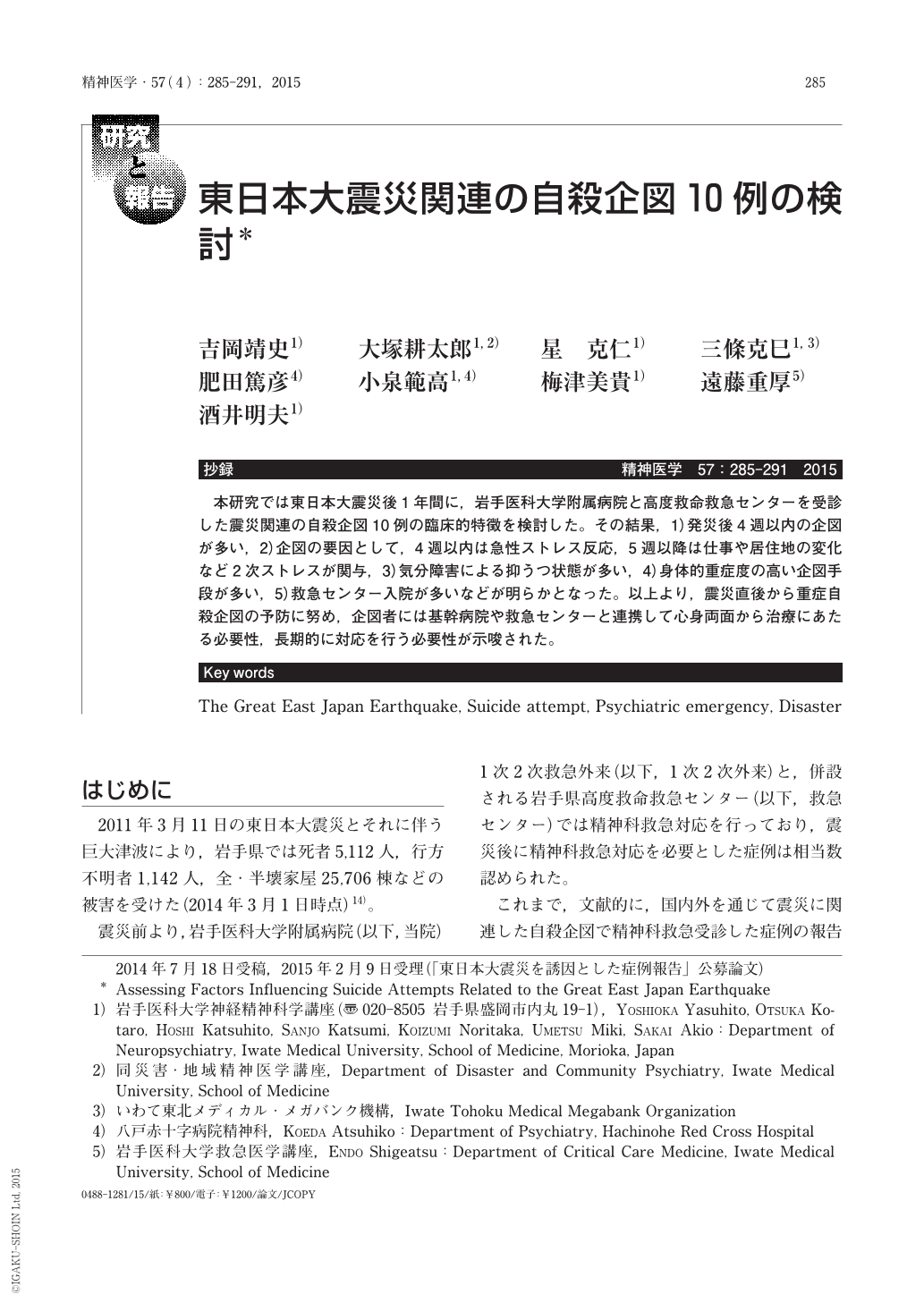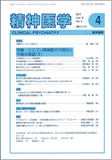Japanese
English
- 有料閲覧
- Abstract 文献概要
- 1ページ目 Look Inside
- 参考文献 Reference
- サイト内被引用 Cited by
抄録
本研究では東日本大震災後1年間に,岩手医科大学附属病院と高度救命救急センターを受診した震災関連の自殺企図10例の臨床的特徴を検討した。その結果,1)発災後4週以内の企図が多い,2)企図の要因として,4週以内は急性ストレス反応,5週以降は仕事や居住地の変化など2次ストレスが関与,3)気分障害による抑うつ状態が多い,4)身体的重症度の高い企図手段が多い,5)救急センター入院が多いなどが明らかとなった。以上より,震災直後から重症自殺企図の予防に努め,企図者には基幹病院や救急センターと連携して心身両面から治療にあたる必要性,長期的に対応を行う必要性が示唆された。
This study analyzed the clinical characteristics of 10 individuals who attempted suicide and were treated at the Iwate Medical University Hospital and Iwate Advanced Critical Care and Emergency Center during the 1-year period following the Great East Japan Earthquake. Results showed that:(1) most attempts were made within 4 weeks following the earthquake;(2) factors related to the suicide attempts included acute stress reactions (for attempts made within 4 weeks following the earthquake) and secondary stress, including changes in work and place of residence (for attempts made 5 weeks or later post-earthquake);(3) most individuals were in a depressive state due to a mood disorder;(4) most used a method(s) that was less likely to result in serious physical injury;and (5) most were hospitalized in the Emergency Center. These findings suggest that efforts to prevent serious suicide attempts must begin immediately after a traumatic event. It is also necessary to provide individuals with both mental and physical treatment, as well as long-term follow-up, in collaboration with key hospitals and/or emergency centers.

Copyright © 2015, Igaku-Shoin Ltd. All rights reserved.


